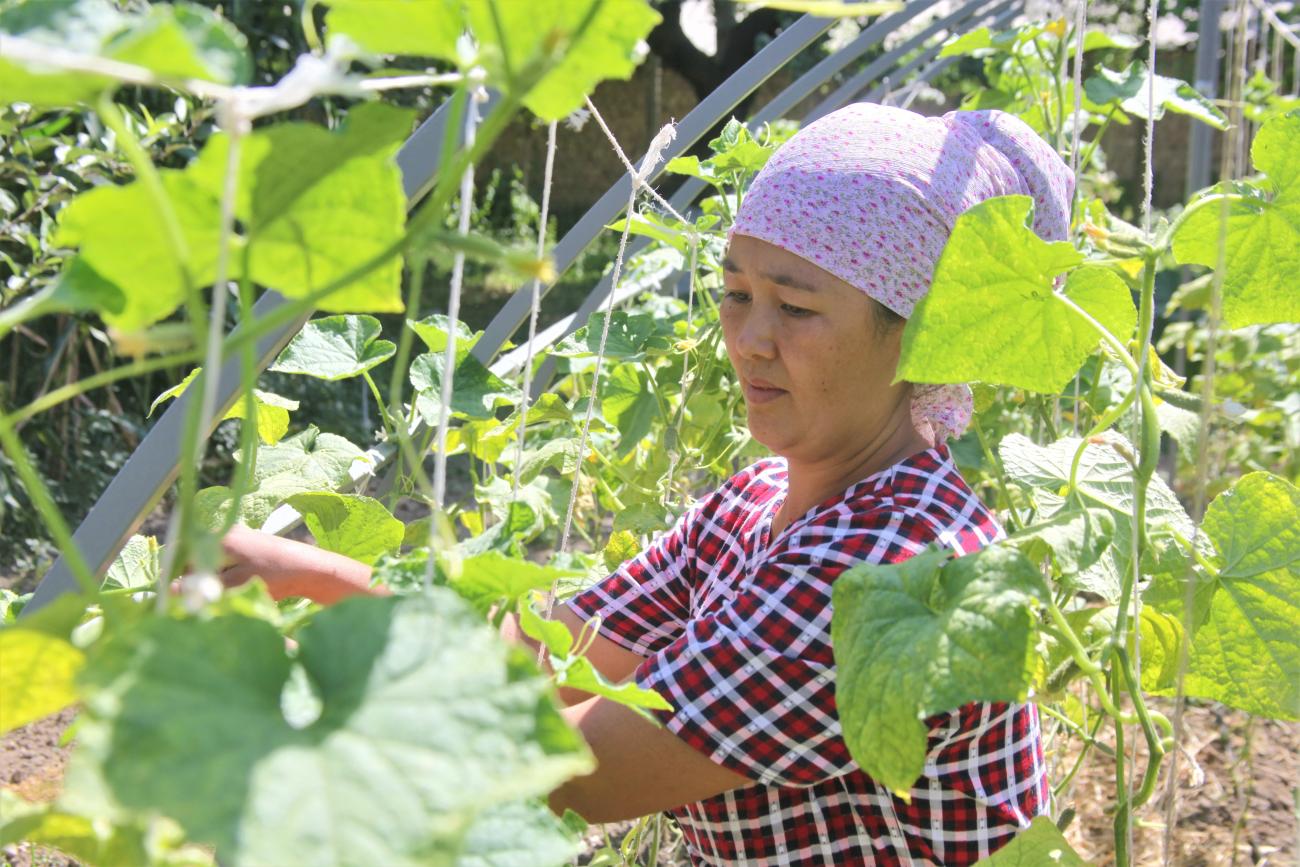Setting the stage to withstand the crisis

Consolidating social and agricultural approaches with advanced nutrition.
An unprecedented public health emergency has baffled the entire world, reaching its most remote and isolated areas. In a matter of weeks, a new virus that knows no boundaries has put the whole world on a pause, closing borders, slowing down international trade, and disrupting food access. While too early to estimate all the consequences of the pandemic, measures to contain COVID-19 have already left their mark on global food security and agricultural production.
The situation is not exceptional in the Caucasus and Central Asia, where, for a large part of the population, agricultural production is the only source of food and income. The effects are, however, even more challenging for the vulnerable and rural poor, who, with a lasting crisis, may face food and nutrition insecurity and an elevated risk of poverty due to the abruptly lost sources of livelihoods.
As a result, countries started to look around for innovative approaches to protect the rural poor and most vulnerable, including the elderly and people with disabilities, who are frequently left behind in the immediate response efforts. What they found is that a pathway to assist these affected populations was already in existence and able to pass the challenges of COVID-19.
In 2017–2019, a global FAO project, funded by the Russian Federation, explored avenues for bringing together various social protection and agricultural support measures to strengthen food security and nutrition outcomes of the most vulnerable populations and help them emerge from poverty.
One of the pathways explored in Armenia and Kyrgyzstan in the recent years was the Cash+ programme, combining national social protection cash transfers and agricultural assistance in the form of various agricultural inputs and knowledge through training. This proved to be particularly helpful during the COVID-19 pandemic, making households more confident and resilient on their way through the crisis.
“If we had to rely only on social cash transfers during the crisis, we would definitely struggle to buy enough food,” said Anara Akmatova, a beneficiary farmer from western Kyrgyzstan. “The pilot project provided us with greenhouses to start our production a couple of months earlier than the open field, and seeds of nutrition-dense crops, which we learned how to cultivate. And most importantly, we were taught to safely preserve enough food for winter. We still use our winter supplies.”
As Anara’s peer from Armenia, Lusine Ghukasyan, shares her experience: "The state benefits, of course, allows us to take care of some urgent needs. However, this was not enough. The support from FAO [a cow and an annual forage reserve] was the kind of assistance we needed to build our own source of income. These days, when other employment opportunities are almost nonexistent, thanks to FAO, we are able to take care of our food consumption and even allocate some funds for more active farming,” concluded Lusine.
Today, Lusine and Anara, as well as 280 other rural families comprising more than 1600 people, half of whom are children, and residing in the poorest districts of Lori and Shirak in Armenia and Suzak in Kyrgyzstan, can manage their way through the consequences of the pandemic.
“When the quarantine was announced, at first, I was anxious,” Anara recounts. “But then I realized that we actually have necessary skills and means to withstand the crisis.”
The Cash+ pilots in Armenia and Kyrgyzstan not only solidified foundations for food security and income for poor rural households, even in times of shock, but empowered them to expand their horizons for improving life quality.
Moreover, the approach consolidating social protection and agricultural support has yielded substantial contribution to nutrition of vulnerable population in times of the COVID-19 crisis.

Another example of such agriculture-social consolidation brings us to the Nizhny-Serafimovsky social residential institution in Kyrgyzstan that is a home for almost 400 elderly and people with disabilities. FAO supported an agricultural intervention through planted and equipped orchards of apple, pear, apricot and cherry trees and re-innovated fishpond with carp production. It has been invaluable in supporting food security for the residents during the pandemic.
“This agricultural intervention came very timely in bringing its results. This summer we expect the first yields, so we will be able to give more fresh fruits to our residents,” said Zhumadyl Saliev, Head of the Nizhny-Serafimovsky social residential institution. “Despite the COVID-19 situation, we are certain that we will be able to maintain the good quality and diversity of our residents’ diets.”
Besides supporting the diets of the social residential institution, the agricultural intervention yielded unexpected recreational results during the pandemic restrictions.
“I am 70 years old and have a disability. It so happens that I am spending the dusk of my life at a social residential institution. But I am very grateful that now we have a blossoming orchard and a fishpond here,” says Tashbubu Osmonova, a resident at the Nizhny-Serafimovsky social institution. “During the lockdown, when everything around was closed, we could still take a leisure walk around the pond, watching the fish or enjoying the shade of the orchard.”
The global pandemic has put pressure on many poor and vulnerable families dependent on agriculture. Restoring and supporting their food and nutrition security requires an integrated approach to protect income, prevent negative coping practices, and support production. The experiences from Armenia and Kyrgyzstan vividly demonstrate how coordinated social protection and agricultural measures can support the most vulnerable through the COVID-19 crisis in practice.
Learn more
- Website: Developing capacity for strengthening food security and nutrition
- Video: Strengthening food security and nutrition in Caucasus and Central Asia
- Website: Novel Coronavirus (COVID-19)
FAO Policy Brief: Social Protection and COVID-19 response in rural areas




